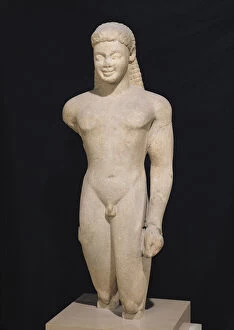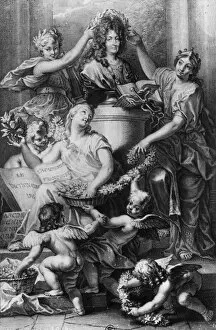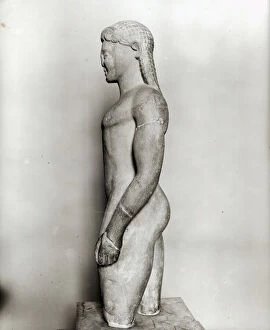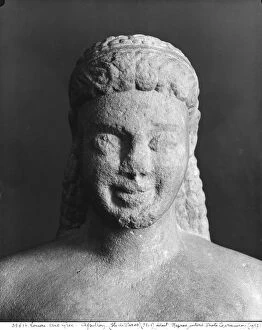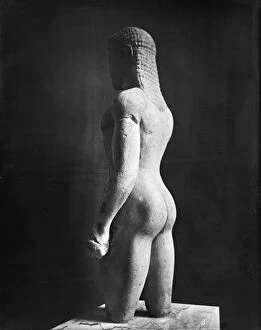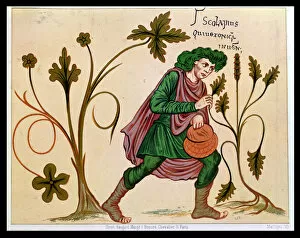Aesclepius Collection
Aesclepius, the Greek god of healing and medicine, is depicted in various forms throughout history
For sale as Licensed Images
Choose your image, Select your licence and Download the media
Aesclepius, the Greek god of healing and medicine, is depicted in various forms throughout history. One such representation is the Kouros statue from Paros, dating back to around 540 BC. This marble sculpture showcases the idealized male form, with its intricate details capturing the essence of youth and vitality. Near the sanctuary of Asklepios, this Kouros stands as a testament to Aesclepius' connection to healing practices. The proximity to this sacred site suggests that it may have been dedicated to him or used in rituals honoring his divine powers. Another depiction can be found in a chromolithograph artwork. This vibrant piece brings forth his image with vivid colors and intricate detailing, showcasing his importance as a deity associated with health and well-being. In Neuvy-en-Sullias, a bronze statue of Aesculapius further emphasizes his role as a healer. This three-dimensional representation adds depth and texture to our understanding of this ancient god's significance. The French Academy Dictionary features an illustration serving as its frontispiece that pays homage to Aesclepius. This symbolic inclusion highlights his influence on medical knowledge and education throughout history. Epidaurus boasts both a ceremonial circular tholos and temple dedicated to Asclepius. These architectural marvels serve as physical manifestations of devotion towards this revered deity within ancient Greek society. An engraving titled "Esculape" captures yet another artistic interpretation of Aesculapius' visage. Through detailed lines etched onto paper, we are reminded once again of his association with medicine and healing practices. Within Ms Latin 6862 folio 18v lies an illuminating manuscript by Antonius Musa depicting Aesculapius discovering betony - an herb believed to possess medicinal properties during ancient times. This visual narrative reinforces the god's connection not only with healthcare but also herbal remedies.



